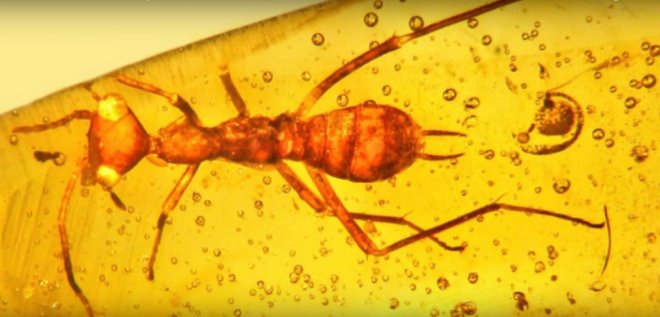
Scientists have discovered a 100 million years old insect with ET-like features, preserved in amber in Myanmar. The appearance of the prehistoric insect is so unique that it is given its own scientific "order".
Scientists believe that the small wingless female insect got trapped and solidified in amber, which is fossilised tree raisin, while it lived in cracks in the bark of trees and fed on smaller insects and termites.
The intact body of the insect gives the scientists an opportunity to study its features. It has a triangular head with the vertex of the right triangle located at the base of the neck and a pair of bulging eyes. "This insect has a number of features that just don't match those of any other insect species that I know," said George Poinar, a professor at Oregon State University in the US.
"With its long neck, big eyes and strange oblong head, I thought it resembled E.T. I even made a Halloween mask that resembled the head of this insect. But when I wore the mask when trick-or-treaters came by, it scared the little kids so much I took it off," he added.
Scientists also concluded that the position of its head probably gave it the ability to see almost 180 degrees by turning the head sideways. The insect had a long, narrow, flat body and long slender legs and had an omnivorous diet. Scientists also believed it was able to run quickly and had glands on the neck that secreted a chemical when threatened.
All the species o insects that have been discovered yet are placed in only 31 existing orders. However, this new creature, which has been named Aethiocarenus burmanicus, is placed in a newly created order called Aethiocarenodea. Poinar said only one other specimen of this insect has been located, also preserved in Burmese amber, and these specimens consist of the entire Aethiocarenodea order.
However, it is not clear what made these insects go extinct. Experts argue that it is probably due to loss of habitat. "The strangest thing about this insect is that the head looked so much like the way aliens are often portrayed," said Poinar.









